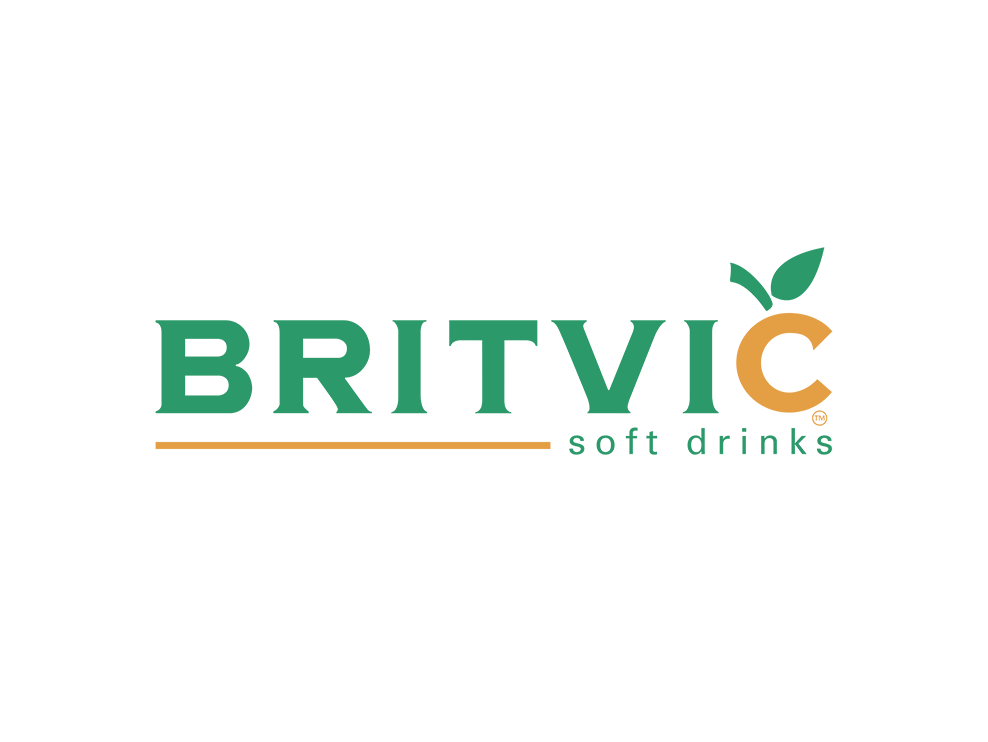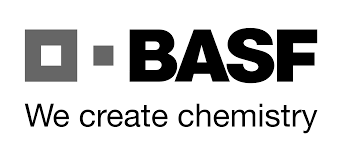How European firms can efficiently access US investors
An Introduction to cross-border trading

Accessing US investors is a top aim for many reasons:
- The access to a varied pool of capital;
- Its robust regulatory landscape;
- The spread of a company’s reputation to an international scale.
NYSE or Nasdaq mean expensive, time-consuming and bureaucratic process, mainly without the aid of a good partner.
On the other side the number of public companies in North America has roughly halved during the last 20 years. There are several reasons for this: the cost of reporting and compliance, access to greater private capital than ever before, concerns around the public markets driving short-termism and M&A activity shrinking the pool of companies that could potentially be publicly traded. This means there is something of an opportunity for European companies looking to access new pools of capital – particularly those in the US, the world’s deepest – that many firms cannot afford to ignore.
The opportunities afforded by trading on markets like OTCQX, the highest tier of OTC Markets, offer a more cost-effective way to reach that capital. OTCQX has a raft of measures included to ensure that high financial standards and qualifications are maintained at all times.
At a time when the world is reeling from the impact of the Covid-19 pandemic, the importance of having a diversified, robust shareholder base has never been greater. Having a solid base of retail, institutional and high-net-worth investors tends to be even more important in a time of uncertainty. And no other country has a richer investment culture and more diversified pool of shareholder types than the US.
Though there are many ways in which European listed firms can be traded by US investors, issuers can face several challenges in being seen by the retail investors who make up a significant part of the US’ large pool of investable capital.
Cross-trading on markets like OTCQX is a cost-effective alternative to being freely traded in US dollars, during US trading hours and by a range of US investors while conforming to all necessary regulatory requirements. Independent analysis also shows that being traded on OTCQX can dramatically improve a security’s liquidity and share value, both at home and abroad. At a time when global uncertainty means the capital markets are poised for a reversion to mean, enabling trading activity has never been more important.
OTC Markets Group’s goal is to provide a public market for companies to have public equity in a way that is easy and efficient. Operating domestically and globally with some of the largest companies in the world provides US investors with easy access to foreign investments, driven by the mission to create better informed and more efficient financial markets.
More than 10,000 US and global securities – including 5,300 international securities, 550 banks, 3,400 non-penny stocks and 2,300 SEC reporting companies – trade on the OTCQX Best Market, the OTCQB Venture Market and the Pink Open Market.
The main topics we are going to discuss are:
- The value of trading your stock in the US – why companies should do it, and why broadening your shareholder base at a time of uncertainty can be a powerful tool;
- The myths of cross-trading – common misconceptions you may have about regulation, disclosure requirements and the mechanics of being quoted on OTC Markets;
- How companies are doing it – best-in-class examples of OTCQX-traded firms that have used cross-border trading to their advantage.
Cross-border trading: The myths
It’s not expensive
Despite the opportunities offered to firms, there are still several persistent myths about cross-border trading enabled through over-the-counter markets. Even the IROs whose shares are now traded on OTCQX were confronted by their own preconceptions.
For Dr Alex Sokolowski, lead for institutional investors in North America at German chemicals firm BASF: ‘at first glance the cost of trading on a new market and the problems of negotiating local regulations were prohibitive, until discovering that trading via OTCQX ‘dampened the blow’ for corporates’.
Stephen Nightingale, director of investor relations at UK drinks maker Britvic, was concerned about getting ‘caught up in the wash’ with so many other EU and UK-based firms, and not attracting the capital he needed,’But working with OTC Markets and taking a long view on the firm’s success in the US have yielded great results for Britvic’, he explains.
The most persistent and over-arching misconception is that cross-border trading is complicated, rooted in regulatory back and forth and, ultimately, not a value-adding process. But Stefan Spath, managing director at MCAP Markets, says that as a market-maker, OTCQX has ‘simplified’ the entire process of buying non-US securities. ‘It allows for an easy conduit between US investors and non-US securities that are traded in non-US markets,’ he says.
The most persistent and over-arching misconception is that cross-border trading is complicated, rooted in regulatory back and forth and, ultimately, not a value-adding process. But Stefan Spath, managing director at MCAP Markets, says that ‘as a market-maker, OTCQX has simplified the entire process of buying non-US securities.’ … ‘It allows for an easy conduit between US investors and non-US securities that are traded in non-US markets,’ he says.
Here are a few more of the recurring misconceptions about the process, its requirements and its limits.
Surely any institution in the US can buy equities if the company is publicly listed?
A commonly held belief is that simply being publicly listed in your home market is enough for your stock ticker to start showing up on every US investor’s screen, and that meeting local regulatory requirements is enough to get sign-off for American audiences.
Other than the largest institutions, most US investors cannot invest directly outside the US, and even when they can it is often prohibitively expensive. Investors can also be restricted by a need to trade US ticker symbols, priced in US dollars (or dollar-denominated securities) and during US trading hours.
‘If there’s no broker publicly quoting you on the OTC Market, there’s no US dollar-denominated facility for investors to see on their terminal and therefore no public market for that security,’ explains Chris King, OTC Markets’ senior vice president. ‘Equally, just because you have US investors on your shareholder list it does not follow that you’re publicly available.’
Aside from trading in less well-established areas like the Pink or Grey market – more of which later – shares in a non-US company are generally available only to the largest institutions that already have cross-border trading capabilities. Trading successfully on a US national stock market is also contingent on a company being a well-known name in the market, something that is hard to guarantee.
Though these smaller investors – investment banks, family offices, high-net-worth individuals and private investors – may manage fewer assets individually than the Vanguards and BlackRocks of this world, they form a large part of the deployable capital in the US and should not be ignored. Additionally, as they tend to be long-term holders, they are important for reducing volatility in your stock during uncertain times.
Having a US ticker solves the problem
In order to be able to recommend, solicit and distribute research to their clients, brokers must ensure the security in question complies with the Blue Sky laws in the state in which their client resides. Not being covered by these exemptions means broker-dealers cannot recommend, solicit or even discuss that security with investors.
Blue Sky laws are the individual securities laws of each US state and, for securities not listed on a US exchange, they must be followed to allow trading in that non-US security by residents of that state. ‘They are unique laws in each state designed to protect its citizens,’ explains King. ‘Even if a company is listed in a major EU market or is a household name, if it is not trading on an established US market to meet Blue Sky compliance in each state, independent financial advisers cannot trade in its shares or even talk about the firm.’
Being compliant across a growing number of states’ Blue Sky regulations means the OTCQX Market is the closest alternative to a national stock exchange. Going through OTCQX is one of the most efficient ways to gain this access on a large scale, without significant costs or administrative headaches. It also means research covering your company can be distributed freely – remember: if your stock does not meet Blue Sky requirements, brokers cannot promote it in any way.
I’m already traded via an ADR/F-share – isn’tthat enough for my firm?
While trading via an ADR/F-share allows your company’s stock to be traded in US dollars, thus dampening the currency and economic risks for US investors (including any currency conversions for dividend payments and foreign taxes), there are a few hurdles that can hamper how freely your stock is traded.
Your company’s ADR/F-share may be traded via the Pink or the Grey market, which consist of a wide range of securities: foreign companies that limit their disclosure in the US, penny stocks and shells, as well as distressed, delinquent, dark and bankrupt companies that may not be willing or able to provide information to investors.
Whatever instrument might suit your company best, an ADR/ F-share trading on OTCQX negates much of the additional regulatory burden, cost and time spent dealing with red tape. Trading on the established OTCQX Market means your securities can reach a broader audience of investors, without any significant extra costs for the issuer, says King, at a ‘fraction of the cost’ of a full US listing. ‘And you don’t need a full listing on, for example, the NYSE for your securities to be successfully traded,’ he adds.
King points to the possible exemption to the SEC Rule 12g3- 2(b), a rule under the Exchange Act that allows foreign private issuers to be quoted and traded in US dollars, in US trading hours on the OTC Market as long as they are already traded on a qualified foreign exchange, publish their financials in English and meet certain other criteria.
Trading on markets like OTCQX won’t make any difference to my stock’s value or liquidity
Being exposed to a wider audience of potential investors can only be a good thing. Independent research commissioned by OTC Markets and carried out by Oxford Metrica finds that companies traded on the OTCQX Market reaped rewards not just in terms of US ownership, but also in their home markets.
An analysis of more than 500 issuers that joined OTCQX between 2007 and 2018 shows that US ownership grew substantially after joining the market. Interestingly, trading volumes also jumped by 28 percent within a company’s home market, as well as growing 37 percent within the OTC Market. These increases were even more pronounced for companies in the lower half of the distribution in terms of market cap.
Positive liquidity reactions were recorded for companies around the world – including in Canada, Asia-Pacific and Europe – and resulted in creating value equivalent to an average 1.5 percent for each surveyed company in its home market after joining.
‘The evidence reveals a clear and consistent picture that value and liquidity are enhanced in the issuing firm’s home market on joining OTCQX,’ the Oxford Metrica researchers write. ‘In addition, there is a significant increase in US ownership once a company is traded on OTCQX.’
The best way to disprove these commonly held misconceptions about trading on OTC Markets is by looking at some examples of companies that are successfully cross-traded there.
Case studies
Britvic - If you’re more accessible, there’s more opportunity for your stock to be traded
Britvic, a mid-cap soft drinks maker based in the UK, has been working with OTC Markets since 2010 following its IPO on the London Stock Exchange in 2005.
For Britvic’s director of IR Stephen Nightingale, working with an over-the-counter trading provider was about extending the reach of the firm’s ADR program and cementing its messaging in the US. Britvic worked with its ADR sponsoring bank and OTC Markets to broaden the range of targets it could approach. ‘We had a broad market-engagement program that was multi-market, part of which was driven by the fact that many people were aware of us as a Pepsi bottler,’ Nightingale says. ‘We hoped to attract the attention of investors on a more global basis.’
He adds that it’s crucial to ‘think about the US more broadly’ and recognize that a lot of money moves outside of Tier 1 money centers such as New York or Boston. Working alongside OTC Markets and Britvic’s ADR sponsor meant the firm could access money away from these traditional investment centers.
The result was access to ‘big pots of money’ that Britvic may never have encountered otherwise due to its market cap, says Nightingale. He has also observed an indirect benefit: Britvic’s investment story is distributed more widely as a result of it being traded on OTCQX, and he has seen a corresponding increase in interest in the company’s stock. ‘We have a top 10 shareholder that became aware of us through the ADR program, and ultimately took a position through ordinary shares,’ Nightingale reveals. He adds that patience when building Britvic’s position in the US was crucial. ‘Investors are familiar with some of our brands, but explaining the concept of some of our more specialized goods – such as fruit squash – to foreign holders can be challenging,’ he says. ‘If you don’t have a global name, you need patience when building awareness of your firm and products.’
His advice for firms considering a similar move is to keep this patient approach in mind. ‘Work with a supportive sponsor and Market,’ Nightingale recommends. ‘It’s about going beyond what you’d do traditionally – whether that’s virtual conferences to reach more distant holders, or something else – to make your life easier. If you’re more accessible, there’s more opportunity for your stock to be traded.’
Orexo - The main reason to upgrade and trade on OTCQX was to improve our US investor baseNuovo paragrafo
Orexo is a mid-cap pharmaceuticals company based in Uppsala, Sweden that specializes in treatments and digital therapies, especially in the growing addiction space
Lena Wange, investor relations and communications manager at Orexo, says the drugmaker’s journey to cross-border trading started as part of a broader build-up of the firm’s US commercial operations, when Danish investor Novo Holdings was brought in as its largest individual shareholder. A switch of strategy and a renewed focus on products in the US meant that, by 2013, making Orexo’s stock available to American investors was of paramount importance.
‘The main reason to upgrade and trade on OTCQX was to improve our US investor base,’ confirms Wange. ‘It also related to a policy-stamp for our company: you have to go through a narrow regulatory process to trade cross-border. Having evidence of doing that, that we had that quality as a company, helped us a lot in our efforts to reach out to US investors.’
Today, with the company’s renewed focus on digital therapies for alcohol and opioid abuse, Wange says being traded on the OTCQX will be more important than ever as she relays Orexo’s story to the market. ‘I think that will attract more US investors to Orexo,’ she explains. ‘We see that there is a mix of potential shareholders and interest from investors in the US.’
Wange’s future focus is on getting two members of Orexo’s management team – who currently live in the US – in front of investors: ‘We will start working with our partners to map out where these investors are located and do what we can to actively reach out to them.’
As the firm is already being traded on OTCQX, Wange says the path to picking up this US activity once more has been simplified. In addition to that ‘quality stamp’ that investors see, the ease of access is particularly important, she explains.
‘I think we are in a very good situation at Orexo now to accelerate our outreach to US investors,’ Wange concludes. ‘We have some exciting products in the pipeline and, company-wise, we are in very good shape.’
BASF - The cost blow of overseas trading has been dampened by our inclusion on OTCQXNuovo paragrafo
Being available to US investors was always a priority at BASF, says Dr Alex Sokolowski, North American institutional investor lead at BASF. ‘Having a diversified shareholder base, and having access to the world’s largest equity market, is important and attractive to us,’ he explains. ‘We have about 20,000 employees in the US, too. Providing a means for investors to acquire our shares and receive dividends in US-denominated currency was critical.’
The German chemicals producer was listed on the NYSE until its listing requirements became prohibitively expensive, says Sokolowski, and some larger institutions had created F-shares to enable trading of BASF’s stock. But the desire ‘to have some insight and control’ of that trading led BASF to opt for a sponsored ADR program backed up by trading on OTCQX. The latter, Sokolowski says, is a ‘little seal of approval’ for US investors that shows regulatory requirements have been met and marks BASF as a high-value stock.
The mission to get the firm’s equity story in front of investors has been made easier by aid from OTC Markets and BASF’s depositary bank, Sokolowski says. ‘OTC Markets is great at making videos on YouTube where I explain our equity story, or bringing me in to speak to journalists, or just having a presence in the elements of the whole process,’ he explains. Another part has been getting BASF in front of retail investors, whether through specialized events and roadshows or trips to see smaller retail markets – particularly in the ‘three Ms’, says Sokolowski: Minneapolis, Madison and Milwaukee.
He adds that the main misconceptions he had about the market were quickly disproved. ‘For the company, the cost blow of overseas trading has been dampened by our inclusion on OTCQX,’ he explains. Regulation, too, was a concern but working alongside BASF’s sponsoring bank and OTC Markets has meant much of the regulatory burden was taken off the issuer’s shoulders.
‘OTC Markets handles whatever it needs to, so we get less of that burden put on us as a firm, beyond what we already do in Europe’ says Sokolowski. ‘It’s one reason we’re not on the NYSE anymore.’
The investor perspective: How it works
MCAP Markets is a financial technology developer and electronic market-maker that deals largely in ADRs, foreign ordinary shares and fixed-income assets for customers in the US, Asia and Europe. Managing director Stefan Spath has had stints as an investment analyst and as a currency trader, but just prior to his work at MCAP he was managing director of the corporate advisory division at INTL FCStone Securities.
Spath describes the advent of more sophisticated OTC Markets as arriving in the wake of a sweep of corporate regulatory reforms – more familiarly known as the Sarbanes-Oxley (Sox) Act – put in place by the SEC in 2002. Born out of the regulatory environment that resulted from a few large-scale corporate scandals, such as those surrounding Tyco and Enron, Sox required far more of companies and their boards with regards to financial reporting.
‘The SEC decided it was time to knuckle down and create more stringent rules related to governance and reporting requirements,’ explains Spath. ‘The unintended consequence was that perfectly good companies – global, blue-chip firms – were really required to duplicate their efforts in the US market if they wanted to retain a US listing. Many thought it would not bring them enough value to justify the duplicated work, so they delisted from the NYSE and Nasdaq.’
If Sox’s stringent measures could not be met, trading of these equities was restricted to ‘over-the-counter’ markets. At the time, these markets were largely composed of thousands of small or micro-cap firms, some of which were going through reorganization or bankruptcy. It meant that, suddenly, securities in multibillion-dollar European corporates might be trading side by side with, say, a bankrupt junior Canadian mining firm.
Some of those companies include household European names, like insurer AXA or food products manufacturer Danone, which delisted from the NYSE in 2010 and 2007, respectively, citing low trading volumes and the fact that US regulators did not recognize their European accounting practices in favor of the Gaap system.
In light of this, OTC Markets Group realized there was still a large investor appetite for firms that could distinguish themselves as assets worth having. The OTCQX Market emerged in the following years, with an application process whereby firms that wished to be traded would have to meet additional financial requirements and ongoing obligations. For OTCQX, each equity also requires a third-party broker-dealer or US securities attorney to attest that the company in question qualifies to be traded. AXA and Danone, which began trading on OTCQX in March 2010 and May 2011, respectively, immediately saw the benefits.
Investment conduit
Firms like MCAP make markets in several thousand different securities – most of which are non-US based – for their clients. Spath describes his firm’s role as ‘a conduit between US investors and non-US securities that are traded in non-US markets’ and says the role of markets like OTCQX has ‘hugely simplified’ the post-2002 trading environment. He illustrates the point with an example of a Danish technology company that wishes to access a pool of US investors, but cannot contend with the large regulatory burden of listing on the NYSE.
‘Let’s say the firm has appointed a sponsor – a US broker-dealer or attorney,’ Spath explains. ‘Once we get a few regulatory steps out of the way, the market-maker will publish a quotation with the security, typically based on where the security is quoted in its home market. This includes information like the security’s individual volatility, or any fluctuations between the US dollar and the security’s local currency, for example. Then it is quoted with a bid and an offer price so brokers can get in touch to buy it.’
Orders are constantly coming in from investors throughout the day, before stockbrokers aggregate them and route the buy or sell commands through to market-makers quoting the securities – all during US Market hours and in US-dollar amounts. These brokers facilitate a flow of deals from the largest institutional investors through to everyday retail buyers, who make up a significant proportion of US capital pools.
‘If the order came through to MCAP, we would fulfil it by selling the securities to the end-investor,’ Spath says. ‘If we don’t have inventory of that stock, we have created a short position on our book. Then the following morning, the trader responsible for that name will go to Copenhagen and buy those shares from the local exchange.’
Indeed, the stock symbol visible on markets like OTCQX would indicate that while – in this example – there is a Danish company’s stock traded on the market, the instrument in question is a synthetic symbol that represents actual ownership of that actual share that is traded locally.
Legal constraints
There are also the Blue Sky Laws to contend with, which, among other things, require share issuers to register and provide detailed financial information on any offerings they make. Spath says the regime can be ‘inefficient’, as it requires a board of state-appointed regulators to pass any share issue, and their decision is often based on factors like a firm’s business plan, which can be misleading.
OTCQX has brought compliance for Blue Sky regulations in-house for a number of states, so companies can have their securities traded and even recommended by brokers where applicable. It means trading can be a ‘two-way street,’ says Spath, so brokers can recommend to their clients what they perceive to be a must-buy security.
‘OTC Markets Group is trying to centralize, organize and evolve the over-the-counter space,’ he continues. ‘It wants to foster more activity and raise the profile of the market, to make it equivalent to a national stock exchange. It’s a sign of modernity: we don’t need to have a physical exchange anymore.’
This means the market-maker is ‘simply a conduit that allows a US investor to buy that foreign share seamlessly,’ adds Spath, thanks to ‘all the hurdles being removed.’ The exchange serves as a ‘three-way’ process, he explains: the company itself gets more visibility with investors; investors can get further information about an overseas stock to make a better-informed decision about what to buy; and market participants can freely enable this trading activity.
And, at times like this, when the capital markets have come to be defined by a period of unprecedented uncertainty, being prepared for easy trading could make all the difference, adds Spath: ‘As things revert to a mean, we will see a rebound in the market. When it comes to international securities traded over the counter that would like to be on OTCQX, if they are waiting for the rebound to occur, there’s going to be a tremendous bottleneck to the regulatory hurdles to get on the market.
‘I’ve been telling companies that in order to get through them, it makes sense to start now, so they’re ready and visible when the rebound inevitably occurs.’
by Alessio De Filippis, Founder and Cheif Executive Officer @ Libentium.
Founder and Partner of Libentium, developing projects mainly focused on Marketing and Sales innovations for different type of organizations (Multinationals, SMEs, - Start-ups).
Cross-industry experience: Media, TLC, Oil & Gas, Leisure & Travel, Biotech, ICT.















